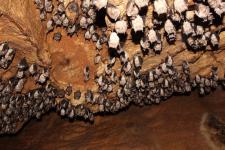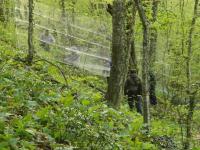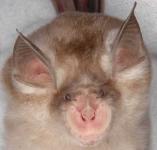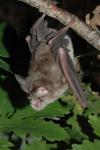The project was conducted by Noctalis in collaboration with the Strandja Nature Park between April 2009 an November 2009, funded by the Principauté de Monaco, the German Federal Ministry for the Environment, Nature Conservation and Nuclear Safty and .
The project covered two topics with concern to bat conservation: the implementation of a survey and monitoring programme including batwork training and the production of information panels to arouse the local population´s and tourist´s interest on bats and bat conservation.
The survey part of the project consisted of a preparation cave survey in wintertime to complement bat fauna information from preliminary excursions and two mist-netting surveys in spring during pre-parturition swarming and in autumn during swarming and mating period of bats.
In total 750 bats belonging to 21 species were mist-netted, significantly increasing the knowledge on the bat fauna in the area. At all cave roosts, at least one species listed in the Annex II of the EC Habitats Directive and the IUCN Red List Europe (2009) as near threatened or vulnerable was caught. The species found in highest numbers were Rhinolophus euryale (N=432) and Rhinolophus blasii (N=126), both classified as vulnerable (IUCN Red List Europe).
As depending highly on caves as both summer and hibernation roosts in the southern part of their distribution area in Europe, horseshoe bats have been a focus of the study. 7 caves of high importance for horseshoe bats have been identified: They give shelter to at least two different species in relatively high numbers. One cave hosted all five horseshoe bats, in three caves four species occurred and in the other four caves three species were mist-netted.



